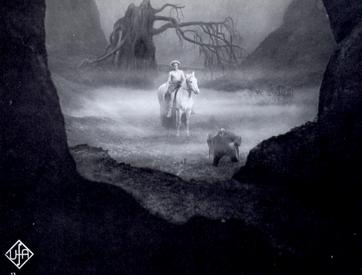Lang dedicated his two mythic films to the German people, attempting to revive the battered national spirit following the struggle of the post World War I years in which Germany was forced to make large reparations to its foes for its wartime aggression. In a 1974 interview Lang argued that in making Siegfried and its companion film he was attempting to recapture some of Germany's lost optimism:
In 1974, in an interview with Focus on Film, Lang said: “I would like to make a remark about [From Caligari to Hitler: A Psychological History of the German Film]. In my opinion this book is wrong about a lot of things and it has done a lot of damage, I feel, particularly among young people. When I made my films I always followed my imagination. By making ‘Die Nibelungen’ I wanted to show that Germany was searching for an ideal in her past, even during the horrible time after World War I in which the film was made. At that time in Berlin I remember seeing a poster on the street, which pictured a woman dancing with a skeleton. The caption read: ‘Berlin, you are dancing with Death.’ To counteract this pessimistic spirit I wanted to film the epic legend of Siegfried so that Germany could draw inspiration from her past, and not, as Mr Kracauer suggests, as a looking forward to the rise of a political figure like Hitler or some such stupid thing as that.”
Robert A Armour made an interesting distinction in his book Fritz Lang when he noted, “Kracauer believes that the climate that produced Lang’s version of German myth in 1924 was the same climate that produced the Nazi movement soon afterwards. Perhaps, but the Nazis tended to use only the part of history they found to work to their advantage. [. . .] Both Lang and the Nazis were shaping the myth to their own versions, but the visions were different and so were the purposes.”
However impressive Lang's cinematic feat remains - and it is a stunning work of film-making - some folk will always want a condensed version. So instead of the 286 minute silent picture treatment, here's a 403-second taster to give you a feel for the epic proceedings: Chuck Jones' 1957 Bugs Bunny short, What's Opera, Doc? It's actually rather more focused on the plotline of another Nibelungen opera, Die Walküre (The Valkyrie), but I expect if you're clicking on a Bugs Bunny link you're probably not that fussy. 'Oh Bunhilda, you're so wovely!'

No comments:
Post a Comment